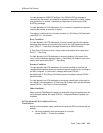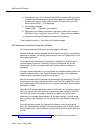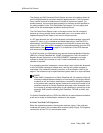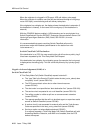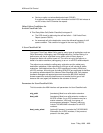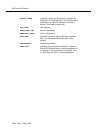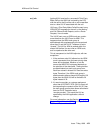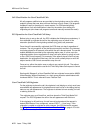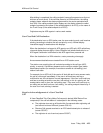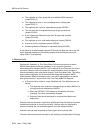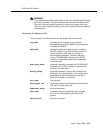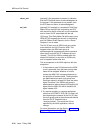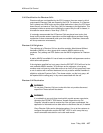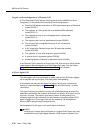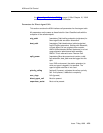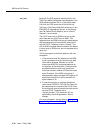
ASAI and Call Control
Issue 7 May 1998
4-23
After dialing is completed, the calling endpoint hears call progress tones (but not
dial tone or touch tones). If the call was placed to a VDN extension, the calling
endpoint hears whatever has been programmed for the vector associated with
that VDN. If the calling endpoint has a display set, the display shows the called
endpoint’s extension and name (if the called endpoint is on-ECS), or the name of
the Trunk Group (if the called endpoint is off-ECS).
Originators may be ACD agents in various work modes.
User-Classified Call Destination
If the destination is an on-ECS station user, the user receiving such a call receives
alerting (according to whether the call was priority or not). Normal display
interactions apply for destinations with displays.
When the destination is a logged-in ACD agent or an ACD split, ACD call delivery
rules and display features apply. A User-Classified call whose destination is an
ACD agent’s extension is delivered to that ACD agent like a personal call.
When the destination is a VDN extension, vector processing rules apply.
Announcement destinations are treated like on-ECS station users.
The station user receiving the call is alerted according to the call type (ACD,
priority, or normal). Call delivery depends on the call type, station type, station
administered options (for example, manual/auto answer or call waiting), and
station’s talk state.
For example, for an ACD call, if the user is off-hook idle and in auto-answer mode,
the call is cut-through immediately. If the user is off-hook busy and has a
multifunction set, the call alerts a free call appearance. If the user is off-hook busy
and has an analog set and the user has “call waiting” or this is a priority call, the
analog station user is given the “call waiting tone.” If the user is off-hook busy on
an analog set and does not have “call waiting,” the calling endpoint hears busy. If
the user is on-hook, alerting is started.
Negative Acknowledgement of a User-Classified
Call
A User-Classified Third Party Make Call request is denied (NAK/Return Error
component) if the call fails before it is attempted in the following cases:
■ The originator does not go off-hook within five seconds after originating call
(and cannot be forced off-hook) (cause=CS0/18)
■ Phantom Call request received on an ECS administered prior to release 6
(cause=CS3/27)
■ The originator is out-of-service (cause=CS3/27)



